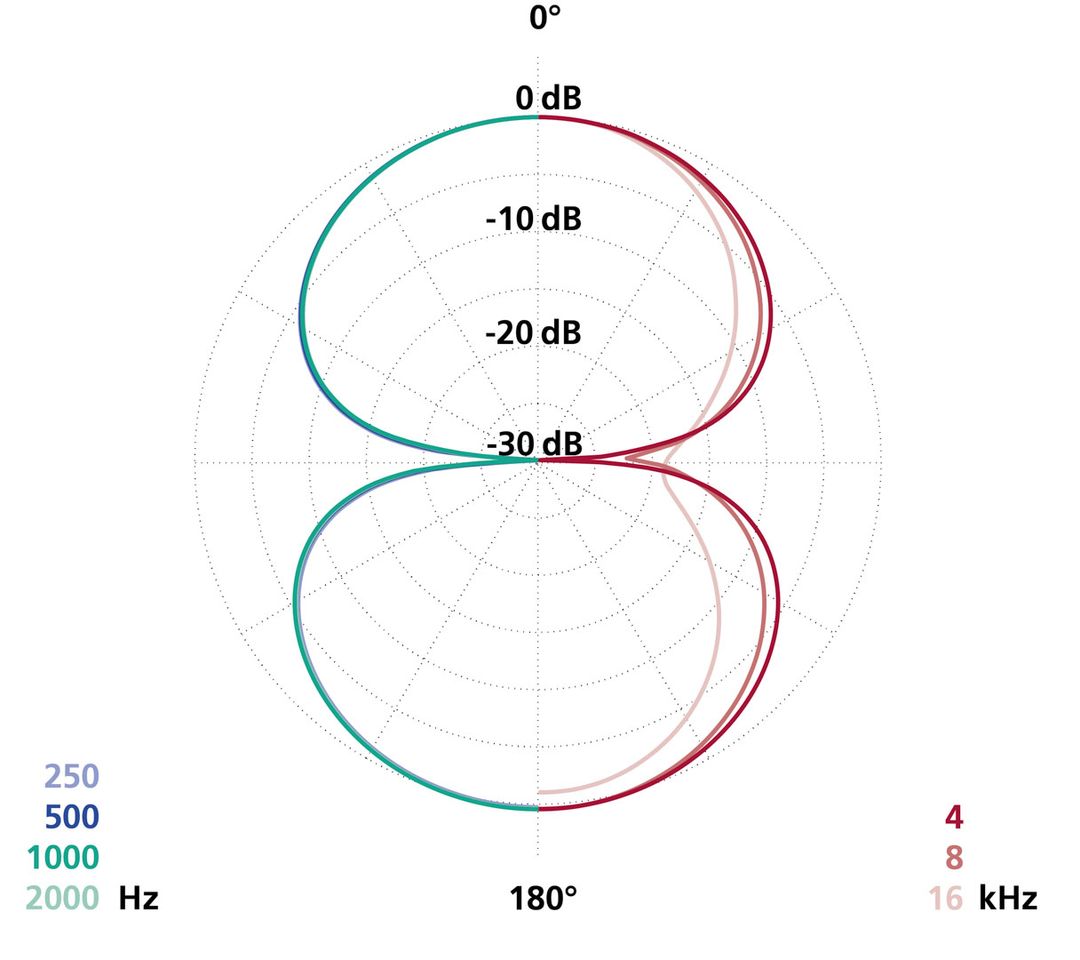Features
- Figure-8 characteristic (pure pressure-gradient transducer)
- Pickup direction: Lateral (perpendicular to the microphone axis)
- 0°-axis marked with a red dot
- Preferred application: M/S, double M/S and "Blumlein" stereo
Order number
- No. 131105

"... I was one of the sound effects recordists hired [ ...] to record race cars and track ambience sounds. I chose a Schoeps MS stereo rig for this job as the recordings were to be done during official race days."
Read more in his user report about Recording sound effects for Gran Turismo
| Pickup pattern | Figure-of-eight |
| Frequency range | 40 Hz - 15 kHz
|
| Sensitivity | -38,5 dB (V/Pa), 12 mV/Pa |
| Equivalent noise level (A-weighted) | 17 dB |
| Equivalent noise level (CCIR) | 26 dB |
| Signal-to-noise ratio (A-weighted) | 77 dB |
| Maximum sound pressure level (THD < 0.5 %) | 133 dB-SPL with CMC 6 |
| Length | 34 mm |
| Diameter | 20 mm |
| Weight | 18 g |
| Surface finish | matte gray |

polar diagram MK 8 + CMC 6 and CCM 8

frequency response MK 8 + CMC 6
No. 191701 matching: Although our normal production tolerances are very close, we can deliver specially matched capsule pairs for a small extra charge.
No. 191102 custom color: Chromagreen, Smoked Silver (looks like the classic Schoeps nickel), other custom colors on request
No. 191201 custom engraving